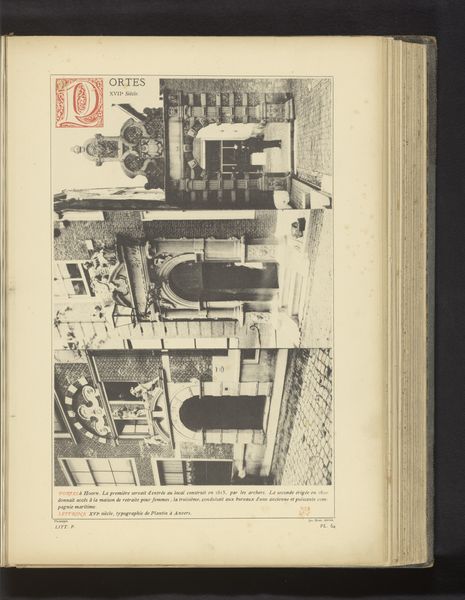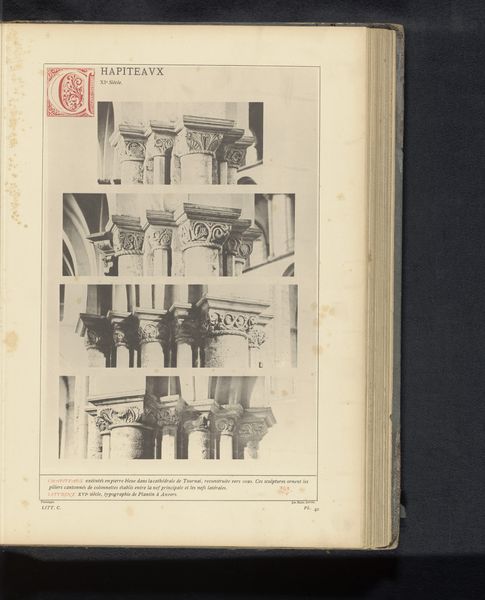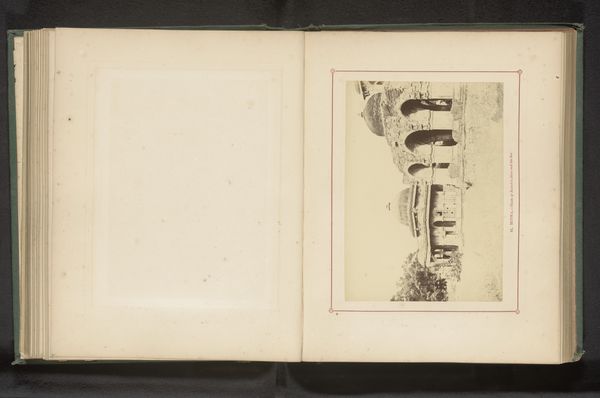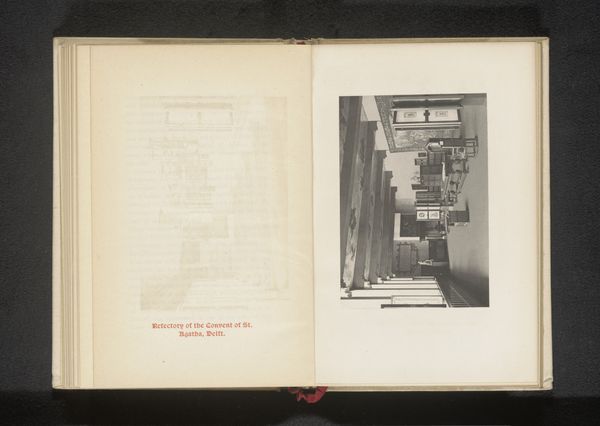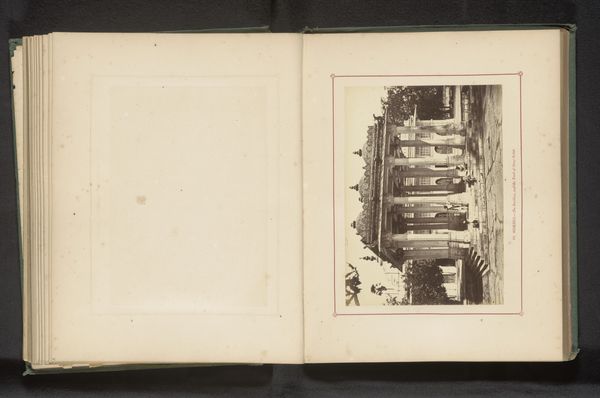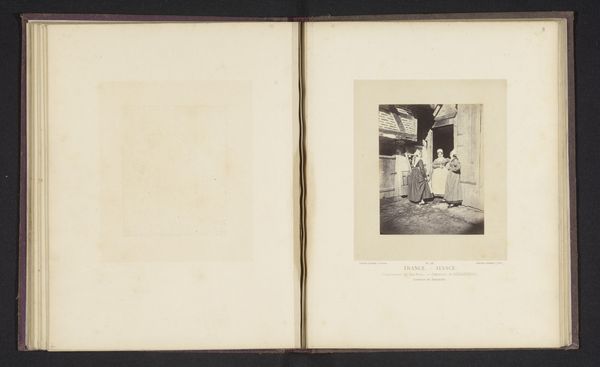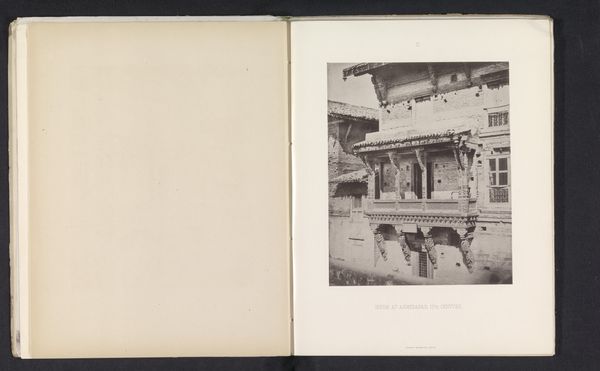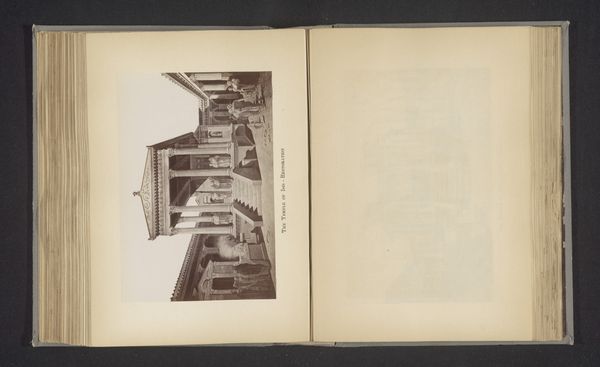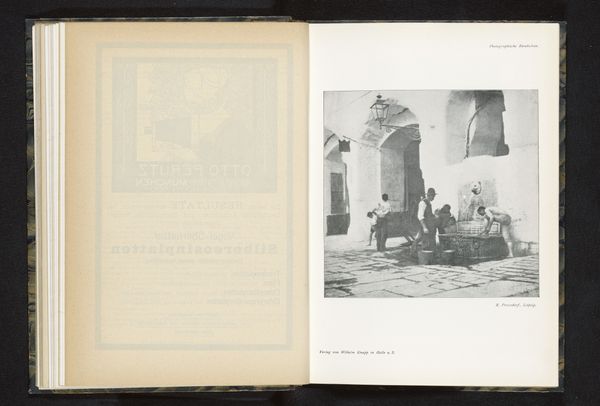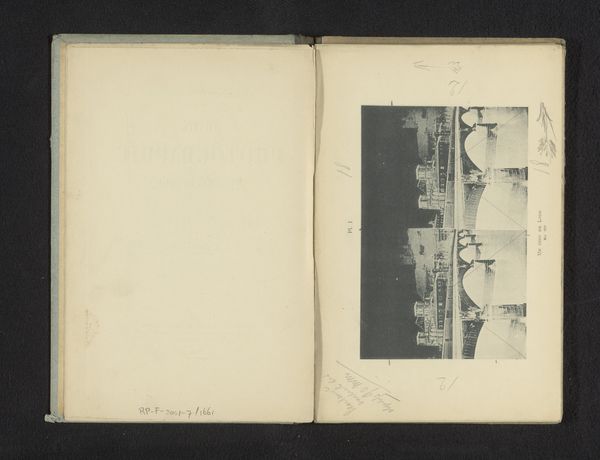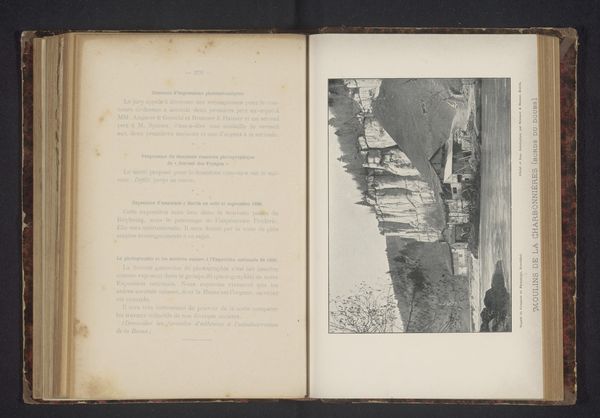
Vijf opnames van kapitelen in de Onze-Lieve-Vrouwekathedraal te Doornik before 1880
0:00
0:00
print, photography, architecture
#
medieval
# print
#
form
#
photography
#
geometric
#
line
#
architecture
Dimensions: height 337 mm, width 233 mm
Copyright: Rijks Museum: Open Domain
Curator: This print showcases five studies of capitals, the decorative tops of columns, from the Onze-Lieve-Vrouwekathedraal, or Our Lady Cathedral, in Doornik, Belgium. The date is before 1880, but the artist remains anonymous. Editor: My immediate sense is of layered secrets, like looking at fragments of a dream half-remembered. The multiple viewpoints, slightly blurry edges – it suggests a place built not just of stone, but of collected stories, wouldn't you agree? Curator: Absolutely. Consider that these capitals weren’t merely architectural flourishes, but key components holding up the entire structure, literally and symbolically. In medieval architecture, the capital often served as a canvas for symbolic representation. The sculptures could depict biblical scenes, moral lessons, or simply decorative motifs, conveying meaning to a largely illiterate populace. Editor: And what’s fascinating to me is how those meanings change over time. These aren't just columns; they're palimpsests of belief and power. Look at the detail – is that foliage? Grotesques peering out? Curator: Indeed. Plant forms were popular, perhaps symbolizing life or paradise, and you might well see stylized human or animal figures interwoven as well, echoing pagan traditions integrated into the Christian framework. Editor: The arrangement into multiple "takes" also evokes the idea of repetition and cultural transmission through ritual acts or storytelling across the generations. In the way a story is altered with retelling and interpretation from unique cultural perspectives Curator: And consider that, even captured in a photograph before 1880, we see layers of time meeting—the Romanesque architecture blending pagan influences under a modern medium of recording it all. Editor: I suppose the very act of photographing it suggests another layer, a wish to archive and contain something essentially timeless. An architectural time capsule. Curator: Precisely. Each frame offers a unique angle, a new interpretation—allowing for an evolving discourse for us today. Editor: Which means even now, we’re adding our layer to its unfolding story. This has me pondering what our contribution will be for those looking at this picture generations from now... What significance of these architectural components will emerge through continued interpretation and interaction?
Comments
No comments
Be the first to comment and join the conversation on the ultimate creative platform.
